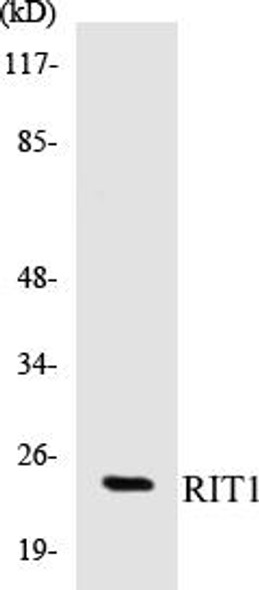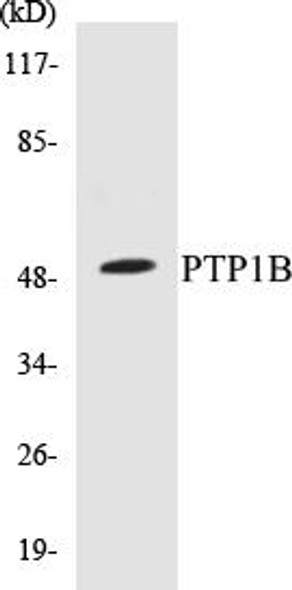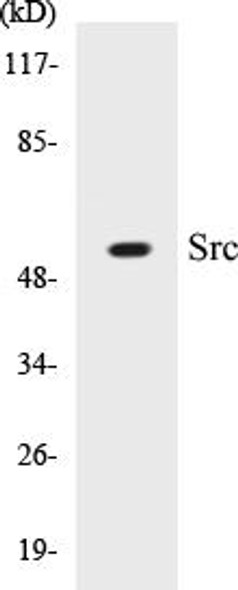Description
BID Colorimetric Cell-Based ELISA Kit
The BID Colorimetric Cell-Based ELISA Kit is a cutting-edge tool specifically designed for the detection of BID levels in cell culture supernatants. This kit provides exceptional sensitivity and specificity, ensuring accurate and consistent results for a variety of research applications.BID, also known as BH3-interacting domain death agonist, is a critical protein involved in apoptosis, the process of programmed cell death. Dysregulation of BID has been implicated in various diseases, including cancer and neurodegenerative disorders, making it a valuable biomarker for studying these conditions and potential therapeutic interventions.
With the BID Colorimetric Cell-Based ELISA Kit, researchers can confidently analyze BID levels in cell culture samples, advancing their understanding of apoptosis and its role in disease pathology. Trust in this reliable and user-friendly kit for precise and insightful research outcomes.
| Product Name: | BID Colorimetric Cell-Based ELISA |
| Product Code: | CBCAB00545 |
| ELISA Type: | Cell-Based |
| Target: | BID |
| Reactivity: | Human, Mouse |
| Dynamic Range: | > 5000 Cells |
| Detection Method: | Colorimetric 450 nmStorage/Stability:4°C/6 Months |
| Format: | 96-Well Microplate |
The BID Colorimetric Cell-Based ELISA Kit is a convenient, lysate-free, high throughput and sensitive assay kit that can detect BID protein expression profile in cells. The kit can be used for measuring the relative amounts of BID in cultured cells as well as screening for the effects that various treatments, inhibitors (ie siRNA or chemicals), or activators have on BID.
Qualitative determination of BID concentration is achieved by an indirect ELISA format. In essence, BID is captured by BID-specific primary antibodies while the HRP-conjugated secondary antibodies bind the Fc region of the primary antibody. Through this binding, the HRP enzyme conjugated to the secondary antibody can catalyze a colorimetric reaction upon substrate addition. Due to the qualitative nature of the Cell-Based ELISA, multiple normalization methods are needed:
| 1. | A monoclonal antibody specific for human GAPDH is included to serve as an internal positive control in normalizing the target absorbance values. |
| 2. | Following the colorimetric measurement of HRP activity via substrate addition, the Crystal Violet whole-cell staining method may be used to determine cell density. After staining, the results can be analysed by normalizing the absorbance values to cell amounts, by which the plating difference can be adjusted. |
| Database Information: | Gene ID: 637, UniProt ID: P55957, OMIM: 601997, Unigene: Hs.591054 |
| Gene Symbol: | BID |
| Sub Type: | None |
| UniProt Protein Function: | BID: a pro-apoptotic member of the Bcl-2 superfamily. Targets intracellular membranes and contains a BH3 death domain. Heterodimerizes with either the pro-apoptotic protein BAX or the anti-apoptotic protein BCL2, antagonizing its protective effect. The activity of BID is regulated by Caspase 8-mediated cleavage, exposing the BH3 domain and significantly changing the surface charge and hydrophobicity, causing translocation to mitochondria where it triggers cytochrome c release. Multiple alternatively spliced variants have been found. |
| UniProt Protein Details: | Protein type:Mitochondrial; Apoptosis Chromosomal Location of Human Ortholog: 22q11.1 Cellular Component: cytosol; membrane; mitochondrial outer membrane; mitochondrion Molecular Function:death receptor binding; protein binding Biological Process: apoptotic mitochondrial changes; DNA damage response, signal transduction; induction of apoptosis via death domain receptors; neuron apoptosis; positive regulation of apoptosis; positive regulation of protein homooligomerization; positive regulation of protein oligomerization; regulation of apoptosis; release of cytochrome c from mitochondria |
| NCBI Summary: | This gene encodes a death agonist that heterodimerizes with either agonist BAX or antagonist BCL2. The encoded protein is a member of the BCL-2 family of cell death regulators. It is a mediator of mitochondrial damage induced by caspase-8 (CASP8); CASP8 cleaves this encoded protein, and the COOH-terminal part translocates to mitochondria where it triggers cytochrome c release. Multiple alternatively spliced transcript variants have been found, but the full-length nature of some variants has not been defined. [provided by RefSeq, Jul 2008] |
| UniProt Code: | P55957 |
| NCBI GenInfo Identifier: | 2493285 |
| NCBI Gene ID: | 637 |
| NCBI Accession: | P55957.1 |
| UniProt Secondary Accession: | P55957,Q549M7, Q71T04, Q7Z4M9, Q8IY86, |
| UniProt Related Accession: | P55957 |
| Molecular Weight: | 11,263 Da |
| NCBI Full Name: | BH3-interacting domain death agonist |
| NCBI Synonym Full Names: | BH3 interacting domain death agonist |
| NCBI Official Symbol: | BID |
| NCBI Official Synonym Symbols: | FP497 |
| NCBI Protein Information: | BH3-interacting domain death agonist |
| UniProt Protein Name: | BH3-interacting domain death agonist |
| UniProt Synonym Protein Names: | p22 BID; BID |
| Protein Family: | BH3-interacting domain death agonist |
| UniProt Gene Name: | BID |
| UniProt Entry Name: | BID_HUMAN |
| Component | Quantity |
| 96-Well Cell Culture Clear-Bottom Microplate | 2 plates |
| 10X TBS | 24 mL |
| Quenching Buffer | 24 mL |
| Blocking Buffer | 50 mL |
| 15X Wash Buffer | 50 mL |
| Primary Antibody Diluent | 12 mL |
| 100x Anti-Phospho Target Antibody | 60 µL |
| 100x Anti-Target Antibody | 60 µL |
| Anti-GAPDH Antibody | 60 µL |
| HRP-Conjugated Anti-Rabbit IgG Antibody | 12 mL |
| HRP-Conjugated Anti-Mouse IgG Antibody | 12 mL |
| SDS Solution | 12 mL |
| Stop Solution | 24 mL |
| Ready-to-Use Substrate | 12 mL |
| Crystal Violet Solution | 12 mL |
| Adhesive Plate Seals | 2 seals |
The following materials and/or equipment are NOT provided in this kit but are necessary to successfully conduct the experiment:
- Microplate reader able to measure absorbance at 450 nm and/or 595 nm for Crystal Violet Cell Staining (Optional)
- Micropipettes with capability of measuring volumes ranging from 1 µL to 1 ml
- 37% formaldehyde (Sigma Cat# F-8775) or formaldehyde from other sources
- Squirt bottle, manifold dispenser, multichannel pipette reservoir or automated microplate washer
- Graph paper or computer software capable of generating or displaying logarithmic functions
- Absorbent papers or vacuum aspirator
- Test tubes or microfuge tubes capable of storing ≥1 ml
- Poly-L-Lysine (Sigma Cat# P4832 for suspension cells)
- Orbital shaker (optional)
- Deionized or sterile water
*Note: Protocols are specific to each batch/lot. For the correct instructions please follow the protocol included in your kit.
| Step | Procedure |
| 1. | Seed 200 µL of 20,000 adherent cells in culture medium in each well of a 96-well plate. The plates included in the kit are sterile and treated for cell culture. For suspension cells and loosely attached cells, coat the plates with 100 µL of 10 µg/ml Poly-L-Lysine (not included) to each well of a 96-well plate for 30 minutes at 37°C prior to adding cells. |
| 2. | Incubate the cells for overnight at 37°C, 5% CO2. |
| 3. | Treat the cells as desired. |
| 4. | Remove the cell culture medium and rinse with 200 µL of 1x TBS, twice. |
| 5. | Fix the cells by incubating with 100 µL of Fixing Solution for 20 minutes at room temperature. The 4% formaldehyde is used for adherent cells and 8% formaldehyde is used for suspension cells and loosely attached cells. |
| 6. | Remove the Fixing Solution and wash the plate 3 times with 200 µL 1x Wash Buffer for five minutes each time with gentle shaking on the orbital shaker. The plate can be stored at 4°C for a week. |
| 7. | Add 100 µL of Quenching Buffer and incubate for 20 minutes at room temperature. |
| 8. | Wash the plate 3 times with 1x Wash Buffer for 5 minutes each time. |
| 9. | Add 200 µL of Blocking Buffer and incubate for 1 hour at room temperature. |
| 10. | Wash 3 times with 200 µL of 1x Wash Buffer for 5 minutes each time. |
| 11. | Add 50 µL of 1x primary antibodies (Anti-BID Antibody and/or Anti-GAPDH Antibody) to the corresponding wells, cover with Parafilm and incubate for 16 hours (overnight) at 4°C. If the target expression is known to be high, incubate for 2 hours at room temperature. |
| 12. | Wash 3 times with 200 µL of 1x Wash Buffer for 5 minutes each time. |
| 13. | Add 50 µL of 1x secondary antibodies (HRP-Conjugated AntiRabbit IgG Antibody or HRP-Conjugated Anti-Mouse IgG Antibody) to corresponding wells and incubate for 1.5 hours at room temperature. |
| 14. | Wash 3 times with 200 µL of 1x Wash Buffer for 5 minutes each time. |
| 15. | Add 50 µL of Ready-to-Use Substrate to each well and incubate for 30 minutes at room temperature in the dark. |
| 16. | Add 50 µL of Stop Solution to each well and read OD at 450 nm immediately using the microplate reader. |
(Additional Crystal Violet staining may be performed if desired – details of this may be found in the kit technical manual.)






